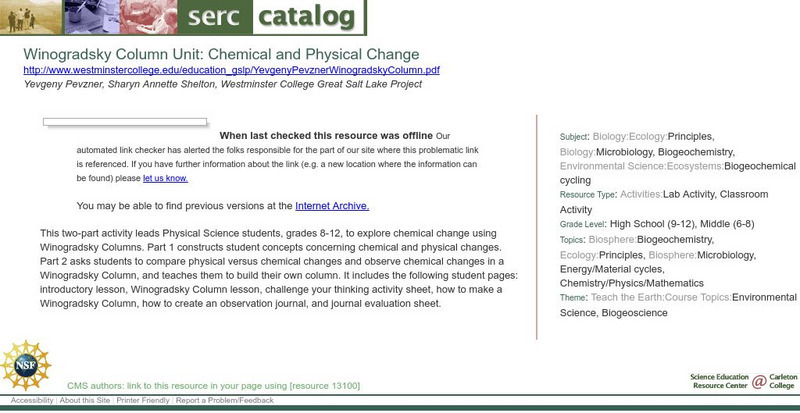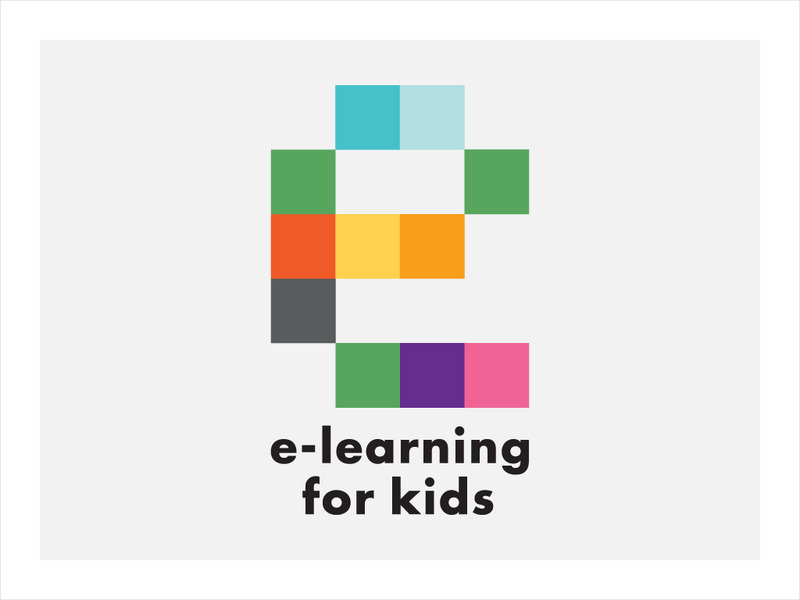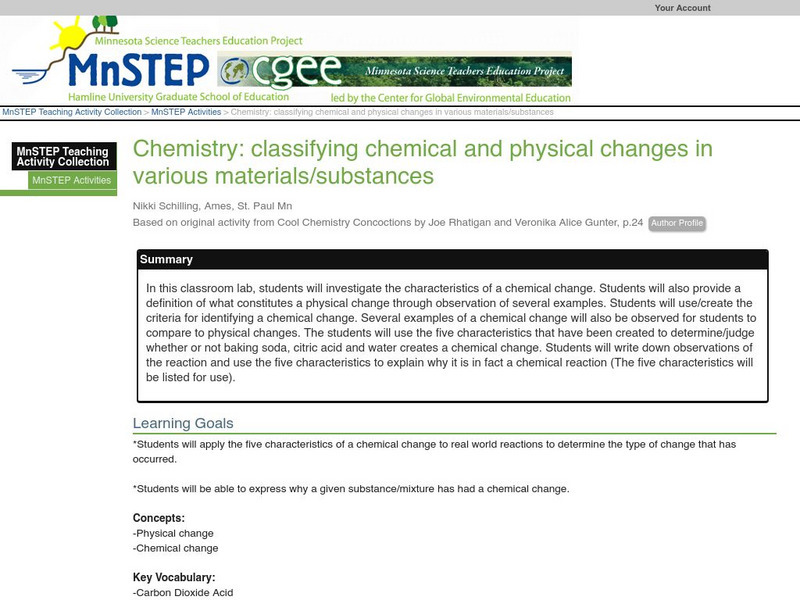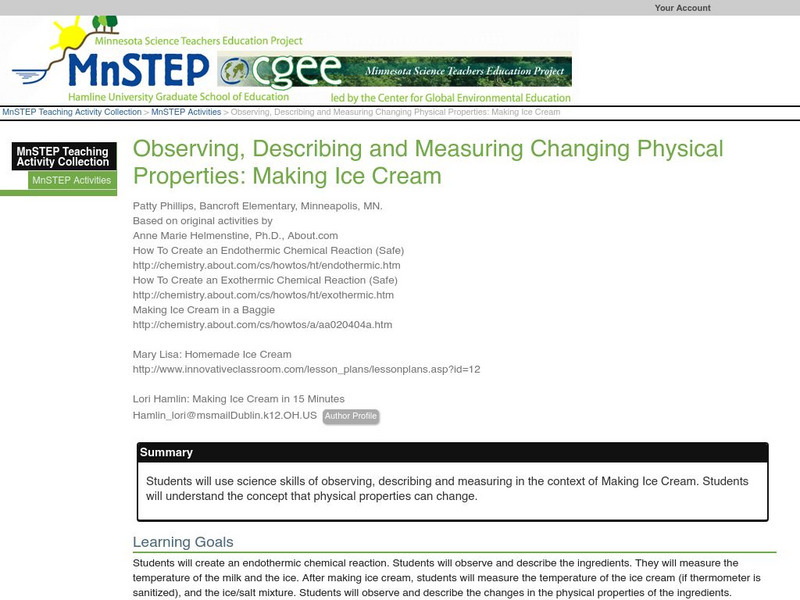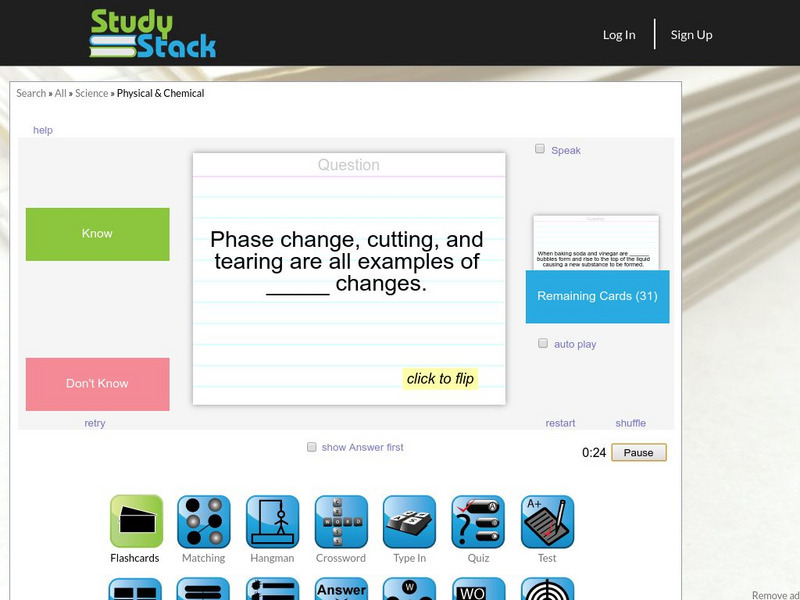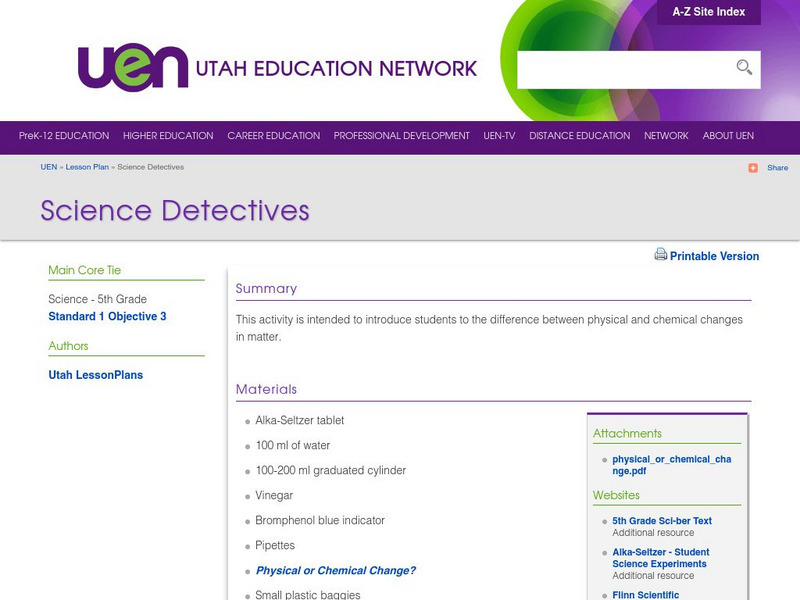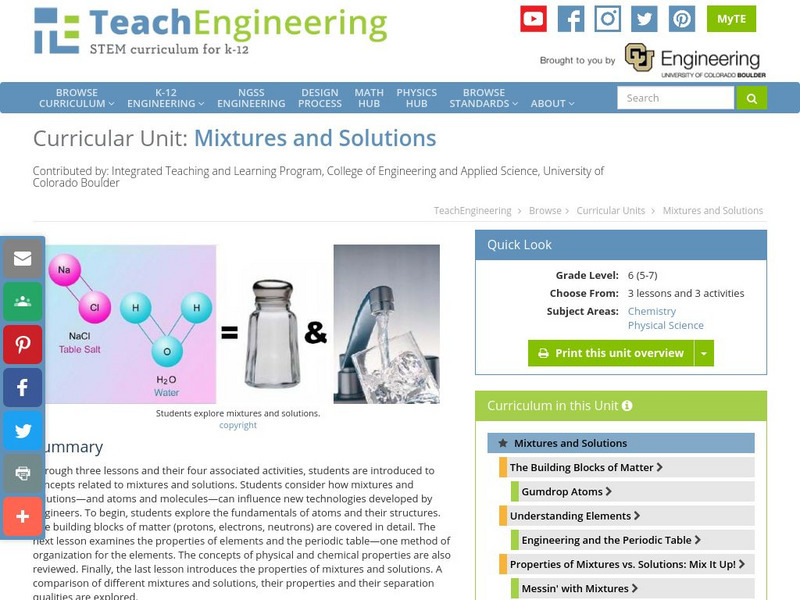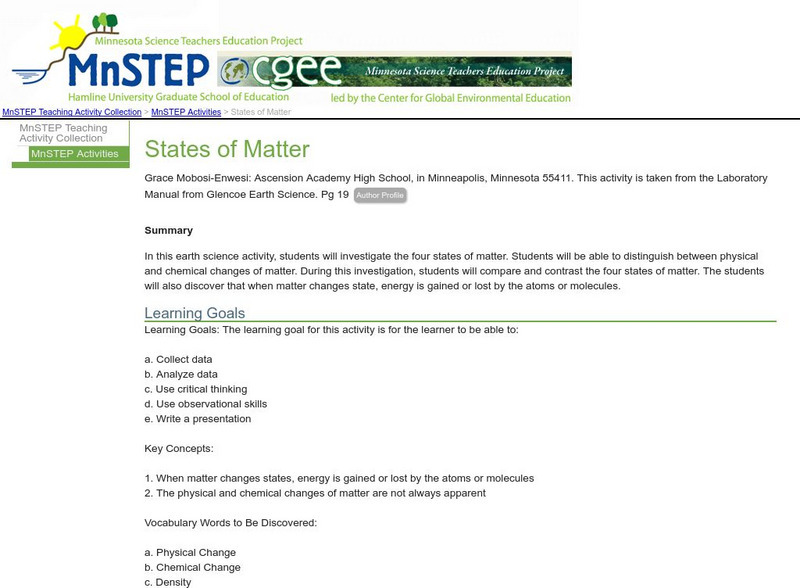Science Education Resource Center at Carleton College
Serc: Winogradsky Column Unit: Chemical and Physical Change
This two-part lesson explores chemical change using Winogradsky Columns. Part 1 constructs student concepts concerning chemical and physical changes. Part 2 asks learners to compare physical versus chemical changes and observe chemical...
Other
English Montreal School: Chemical vs. Physical Changes: Elements vs. Compounds
A laboratory experiment where students classify matter into a homogenous mixture, heterogeneous mixture, solution, or pure substance. Also students will test for physical and chemical changes.
Utah Education Network
Uen: Hot and Cold
Students study the energy associated with physical and chemical changes. The activity consists of observing nine phenomena.
American Chemical Society
Middle School Chemistry: Lesson Plans: What Is a Chemical Reaction?
After observing a demonstration of a chemical reaction between a burning candle and the oxygen in the air, young scholars use atom model cut-outs to model the reaction and see that all the atoms in the reactants show up in the products.
Science Struck
Science Struck: Examples of Chemical Changes in Everyday Life
This resource lists the different types of chemical reactions and gives examples of chemical changes that are seen in everyday life.
eSchool Today
E School Today: What Is Matter
Learn about matter, its three states, changes of state, how matter behaves, and physical and chemical changes in matter.
CK-12 Foundation
Ck 12: Fifth Grade Science: Physical Science: Chemical Properties of Matter
A module that provides the definition of chemical property and examples of the chemical properties of matter using explanations, pictures, and review questions.
E-learning for Kids
E Learning for Kids: Science: Mediterranean Sea: What Are Reversible and Irreversible Changes?
Students will learn about reversible and irreversible changes in materials in this lesson.
E-learning for Kids
E Learning for Kids: Science: Greek Theater: What Are Reversible and Irreversible Changes?
Join Leander in his chemistry lesson, and learn about the change of different types of substances.
Science Education Resource Center at Carleton College
Serc: Classifying Chemical and Physical Changes in Various Materials/substances
In this classroom lab, young scholars will investigate the characteristics of a chemical change. Students will also provide a definition of what constitutes a physical change through observation of several examples. Young scholars will...
American Chemical Society
Middle School Chemistry: P H and Color Change
Learn about color change and pH as it relates to chemical changes.
Utah STEM Foundation
Utah Stem Action Center: Changes in Matter
The goal of this activity is to develop and use a model to describe that matter is made of particles on a scale that is too small to be seen. You will be making observations of changes supported by a particle model of matter.
American Chemical Society
American Chemical Society: Science for Kids: Chemical and Physical Change
Engaging hands-on science lessons for grades 2-6 on chemical and physical changes.
BBC
Bbc Schools: Ks2 Bitesize: Science: Materials: Changes in Materials
Help solve the mystery and find the missing crystal. Following the activity, read more about chemical and physical changes, and then take a quick quiz to check for understanding.
Other
The Science House: Ziptop Bag Chemistry
In this experiment, three reactions are performed in a sealed Ziploc bag so that they can be observed. Students identify whether physical or chemical change has taken place.
Clackamas Community College
Clackamas Community College: Distinction Between Chemical and Physical Change
Explains the difference between chemical and physical changes.
Science Education Resource Center at Carleton College
Serc: Observing,describing, Measuring Changing Physical Prop: Making Ice Cream
Learners will create an endothermic chemical reaction by making ice cream. They will observe, describe, and measure the ingredients. After making ice cream, students will measure the temperature of the ice cream and the ice/salt mixture....
Utah Education Network
Uen: Changes in Matter Chemical Reactions They're Everywhere
Can you distinguish physical changes from chemical reactions? You'll be presented with a number of pictures and asked to identify those which are examples of chemical reactions.
Other
King's Centre for Visualization in Science: Scientific Models
A series of interactive applets use scientific models to teach some basic concepts of matter, including states of matter and physical and chemical changes.
Other
Study Stack: Changes in Matter
An online flashcard deck that reviews properties of matter. Test your knowledge of matter, chemical changes, and physical changes. Site allows you to put flashcards into two sections, those you know and those you don't. After separating...
Utah Education Network
Uen: Science Detectives
Students are given a scenario for this lesson where they must use investigative skills like a detective would to decide whether changes that happen to objects in the story are physical or chemical. They then conduct an experiment with...
American Chemical Society
Inquiry in Action: Exploring Baking Powder
An activity that allows students to discover the active ingredients in baking powder by studying chemical change. Lab activity includes both teacher and student instructions.
TeachEngineering
Teach Engineering: Mixtures and Solutions
This unit covers introductory concepts of mixtures and solutions. Students think about how mixtures and solutions, and atoms and molecules can influence new technologies developed by engineers. The first lesson explores the fundamentals...
Science Education Resource Center at Carleton College
Serc: Mn Step: States of Matter
In this activity, young scholars investigate physical and chemical changes in the states of matter for water. They collect data and record their observations.


